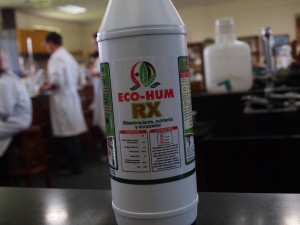A close-up look at experiential learning in practice
What do you imagine when you hear about “experiential learning” in the context of agriculture? For many people, the phrase calls to mind planting, cultivating and pruning. EARTH´s educational model not only gives students the opportunity to do such hands-on work, but also makes it meaningful by offering students an innovative theoretical foundation to guide their actions.
 Practices that fit into a traditional agricultural training form an important part of the EARTH educational model. During their first two years, students complete the “Work Experience” program, working on crop, livestock and forestry production modules on EARTH’s farms.
Practices that fit into a traditional agricultural training form an important part of the EARTH educational model. During their first two years, students complete the “Work Experience” program, working on crop, livestock and forestry production modules on EARTH’s farms.
In all courses at EARTH, professors strive toward the ideal of building students´ experiential knowledge while facilitating their self-exploration. Professor B.K. Singh, who embodies such an approach in his courses, comments: “To learn through experience is to exert the capacity of knowledge; it is not only driving a tractor and cutting grass, it is also applying science and seeing the results.”
Attending a soils course with Professor Singh is a very entertaining and beneficial experience. A typical class with him includes the following: first, students analyze four different soil types, samples from the field are where each student works. Then, students examine fertilizers to determine which best matches their soil samples´ needs. In this way, students learn “precision agriculture” (the term for using science to optimize agricultural practices) first hand.
After the students complete their experiments, the professor shows their analysis results to the class. As he does so, he explains the theory behind the analysis and answers any questions students may have. The class dynamic keeps everyone engaged, by requiring the active participation of both the students and the professor.
During lab classes, students also take part in the process of making eco-friendly fertilizers, which are later sold as “Eco-Hum.” In doing so, they participate directly in creating real products.
These are products made with few resources—as Professor Singh explains, “zero money, but infinite knowledge. The important thing is to have the ideas; money can eventually come, but if you don’t have ideas, you have nothing.”
When creative ideas arise, they result in a “learning moment.” If excessive paperwork or obstacles to using equipment prevent students from enjoying experiments and finding real value in them, students may find science difficult to learn. That’s why at EARTH, the labs and their equipment are accessible to students at all times.
“Labs are churches of knowledge, and we can’t stop students from using them,” says Singh. Instead of a tedious process involving much bureaucracy to use the lab tools, EARTH prefers to work under an honor system, and students may use the labs whenever they need to do so. If they damage the labs in any way, students must notify the University.
“Students must want to learn even more than what the professor desires to teach,” says Singh. By providing students with the best scientific tools with which to do so on their own, EARTH nurtures students´ natural curiosity and passion for learning.





